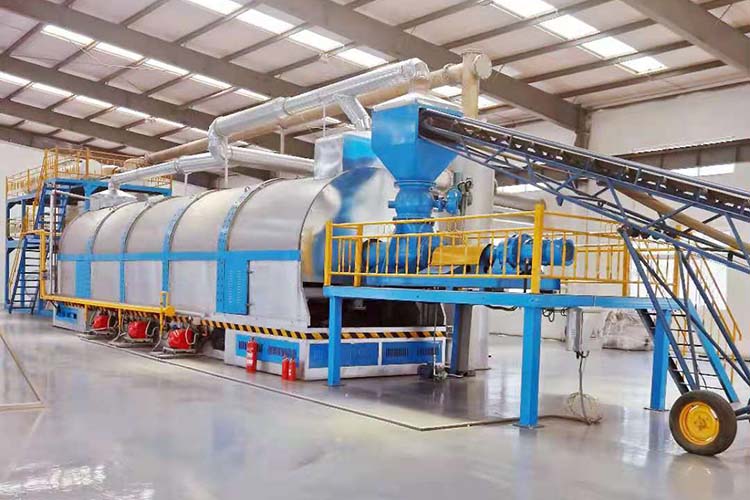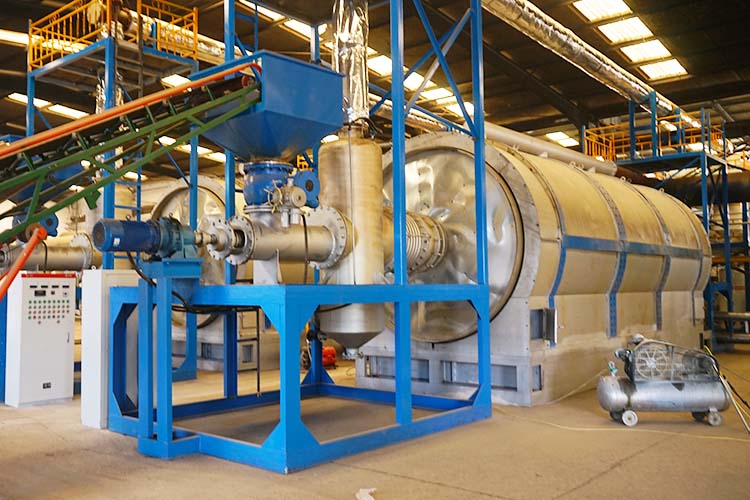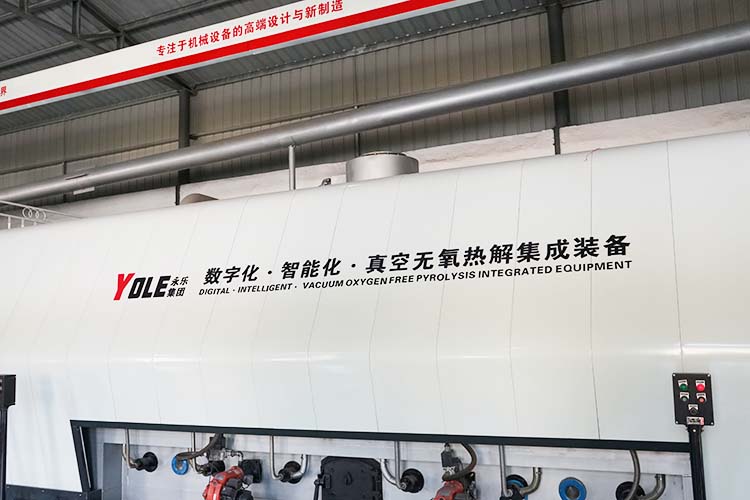With the rapid development of the automotive industry, the disposal of waste tires has become a critical issue in environmental protection. Traditional methods like landfilling or incineration not only occupy vast land resources but may also cause secondary pollution. The emergence of waste tire pyrolysis equipment offers a viable solution to this challenge. By employing thermal decomposition technology, this equipment converts waste tires into reusable resources, achieving reduction, harmless treatment, and resource utilization—aligning with sustainable development principles.

The core process of waste tire pyrolysis equipment lies in the pyrolysis reduction reaction, where tires are heated and decomposed in a sealed environment. Through precise temperature control, organic compounds in rubber are transformed into fuel oil, while steel wires and nylon fibers are completely separated. The entire process adopts a closed design to prevent harmful gas emissions and is equipped with an advanced exhaust treatment system to ensure compliance with environmental standards. This method not only enhances resource recovery rates but also avoids pollution issues associated with traditional disposal methods.
From a resource recovery perspective, waste tire pyrolysis equipment demonstrates significant advantages. The fuel oil produced from rubber pyrolysis can be used for industrial combustion, while the carbon black serves as raw material for rubber products. Separated steel wires and nylon fibers can be directly recycled. This full-component recovery model reduces resource waste and alleviates supply pressures on raw materials like rubber and steel. Additionally, the production process achieves near-zero waste, aligning with circular economy principles.

In terms of environmental performance, the equipment effectively controls pollutant emissions through technological optimization. A small amount of exhaust gas generated during processing is purified before being discharged, ensuring minimal impact on the surrounding environment. Wastewater is reused through a circulation system, reducing water consumption. Moreover, the operation produces no dust pollution, making its overall environmental performance superior to traditional methods. This green processing technology provides reliable support for the sustainable utilization of waste tires.
From a practical standpoint, waste tire pyrolysis equipment is user-friendly, adaptable, and capable of processing tires of various specifications. Its rational structural design ensures stable operation with low maintenance costs, making it suitable for large-scale production. The modular design also allows for flexible capacity adjustments to meet the needs of different-sized enterprises.

The widespread adoption of waste tire pyrolysis equipment opens new possibilities for environmental protection and resource recycling. It not only addresses the environmental issues caused by tire accumulation but also creates significant economic value. With continuous technological advancements, this equipment will play an even greater role in the resource regeneration sector, contributing to the development of green industries.
Yongle Environmental Protection is mainly engaged in the research and development, production and sales of complete sets of technical equipment for organic solid waste disposal and comprehensive utilization. Production and manufacturing, domestic waste treatment equipment, tire pyrolysis equipment, medical waste disposal equipment, hazardous waste disposal equipment, and achieve efficient and comprehensive utilization of resources through independently developed low-temperature anaerobic pyrolysis equipment technology solutions.
Tags:Used tire oil refining equipment achieves resource recycling and utilization.,waste tire refining equipment,YONGLE GROUP
 Latest news
Latest news


























